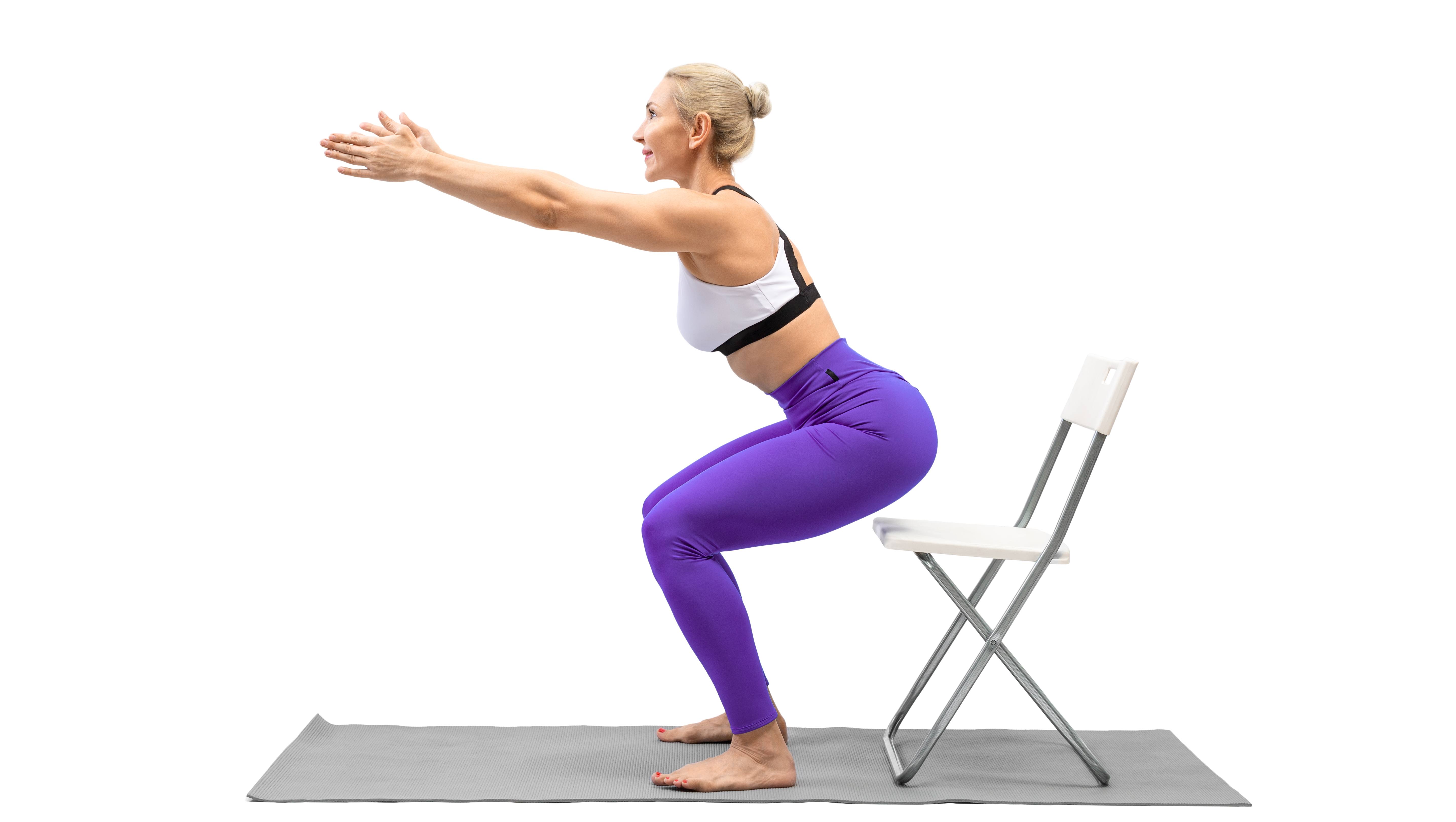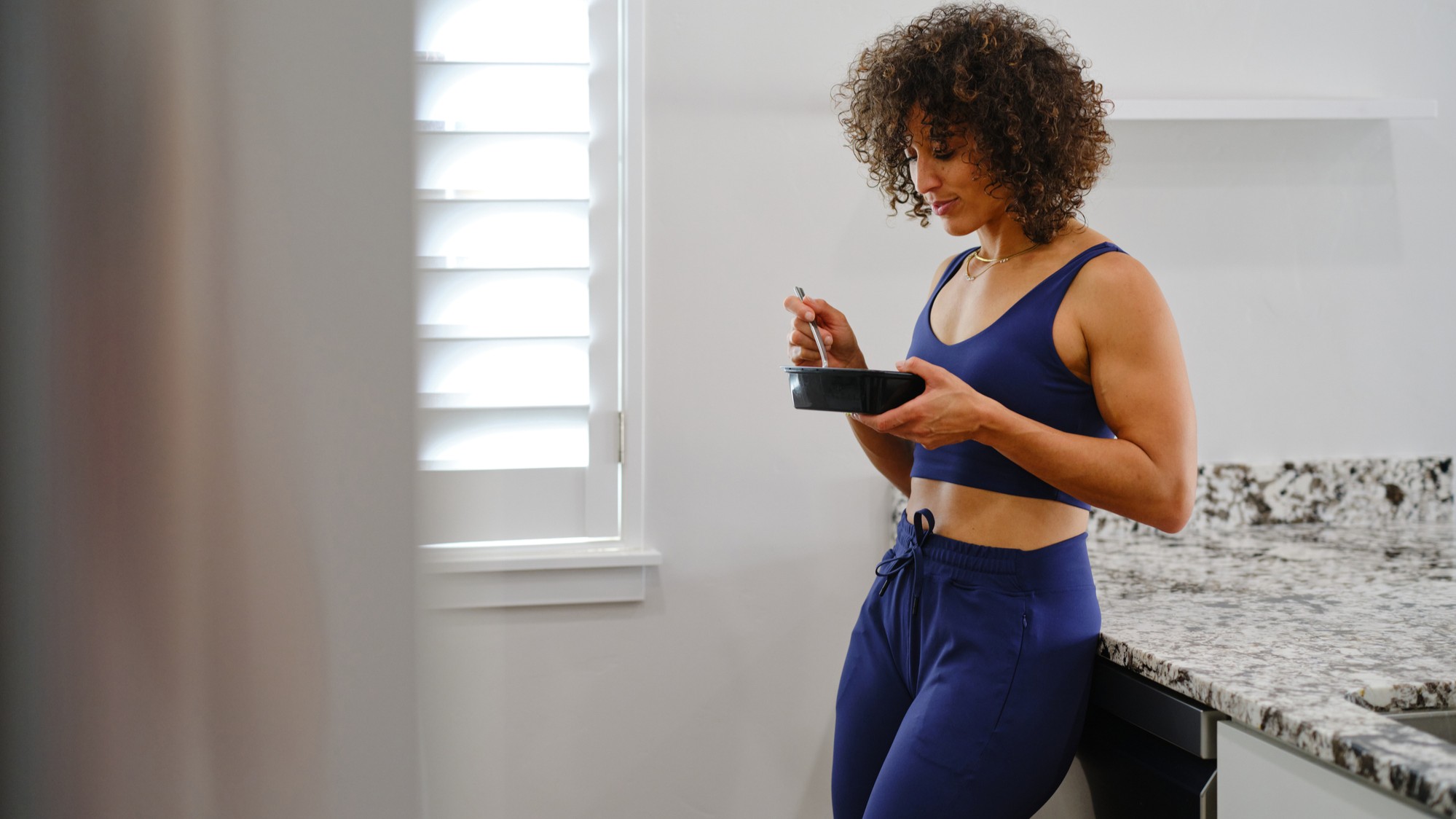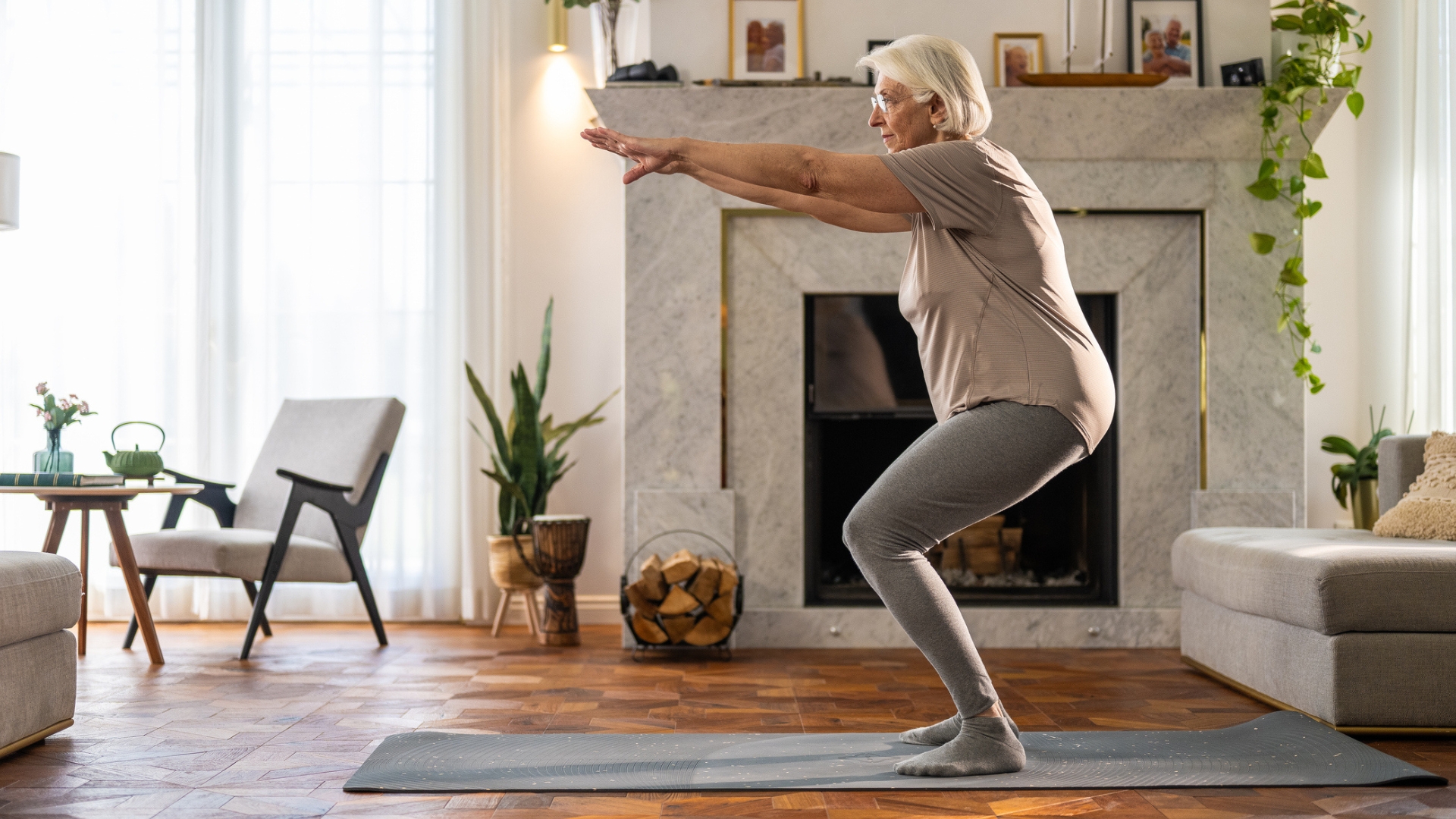A personal trainer says this is the one exercise everyone should be doing to stay mobile and strong as you age
It's never too late to make this essential compound movement part of your routine and reap the quality-of-life benefits

Did you know you may lose up to 8% of your muscle mass every decade after your 30s, and the speed of muscle loss increases after your 60s? But you can keep hold of that muscle—as well as staying strong and mobile and keeping aches and pains away—if you make strength exercises part of your routine. It doesn’t have to be complicated, either.
Personal trainer and founder of the women's fitness franchise VICTRESS MVMT Stacy Orsborn says one simple exercise will help you maintain and build muscle mass, and keep your joints healthy no matter your age—the squat.
The benefits of squats for improving strength and mobility
"The squat is the best strength exercise I'd recommend as you get older because it's all-encompassing," says Osborn. That's because it's a compound movement, so it simultaneously engages different muscles, including the quads, glutes and the core. "Any type of compound lifting where you're using the entire body structure is great," says Osborn.
The squat is an exercise which will help you maintain your ability to perform everyday movements such as sitting down and getting up from a chair. "Prioritizing strength exercises as you get older is extremely important when it comes to quality of life," says Osborn. "Having the strength to get up from the floor is very useful as you age."
How to do a bodyweight squat
- Stand with your feet shoulder-width apart and your toes pointing slightly out.
- Push your hips back and bend your knees to lower, keeping your chest up and pushing your knees out so they don't cave in.
- Pause once your hips are in line with your knees (or as low as your mobility allows).
- Push through your heels to stand back up.
"Think about having a string on your tailbone and a string on your knees, both of which are pulling upwards as you descend," says Osborn.
Osborn also recommends that you inhale and brace your core before you lower, then exhale as you rise.
If you're struggling to maintain good form, this could be because of a lack of mobility in other parts of your body. "Ankle mobility issues could potentially affect your form," says Osborn, such as squatting low enough.
Get the Fit&Well Newsletter
Start your week with achievable workout ideas, health tips and wellbeing advice in your inbox.
A lack of core strength can also have an effect. "Any weakness in your core could see your chest collapsing," says Osborn. Try this beginner's core workout if this is something you struggle with.
Take a look at our full guide on how to squat for more form tips.
How to modify and progress squats

Squatting onto a chair is a great place for beginners to start.
The squat is easy to adjust to your level of strength and mobility, and you should aim to gradually increase the difficulty as you improve.
"Bodyweight air squats, or squatting to a chair or a bench might be enough for beginners," says Osborn.
If you're struggling to reach full depth—lowering your hips below your knees—in a squat, try squatting to a chair, box or bench that's at knee height. When your butt taps the chair, immediately push through your heels to stand back up.
"From there, we would progress to the kettlebells or dumbbells," says Osborn. "Then from there, make it a little bit harder by increasing weight over time."
If you have a gym membership, Osborn says barbell squats are a great exercise to aim for. "Back squats work more of the posterior chain [the muscles located down the backside of the body] and the front squat works more of the core," says Osborn.
Alice Porter is a freelance journalist covering lifestyle topics including health, fitness and wellness. She is particularly interested in women's health, strength training and fitness trends and writes for publications including Stylist Magazine, Refinery29, The Independent and Glamour Magazine. Like many other people, Alice's personal interest in combining HIIT training with strength work quickly turned into a CrossFit obsession and she trains at a box in south London. When she's not throwing weights around or attempting handstand push-ups, you can probably find her on long walks in nature, buried in a book or hopping on a flight to just about anywhere it will take her.
-
 Put down the protein shake—this high-protein chicken and rice recipe is a better way to refuel after a workout
Put down the protein shake—this high-protein chicken and rice recipe is a better way to refuel after a workoutAnd it only takes 10 minutes to make
By Lou Mudge
-
 The three Pilates exercises every beginner should start with, according to an expert instructor
The three Pilates exercises every beginner should start with, according to an expert instructorA sequence that will take you no more than 10 minutes
By Alice Porter